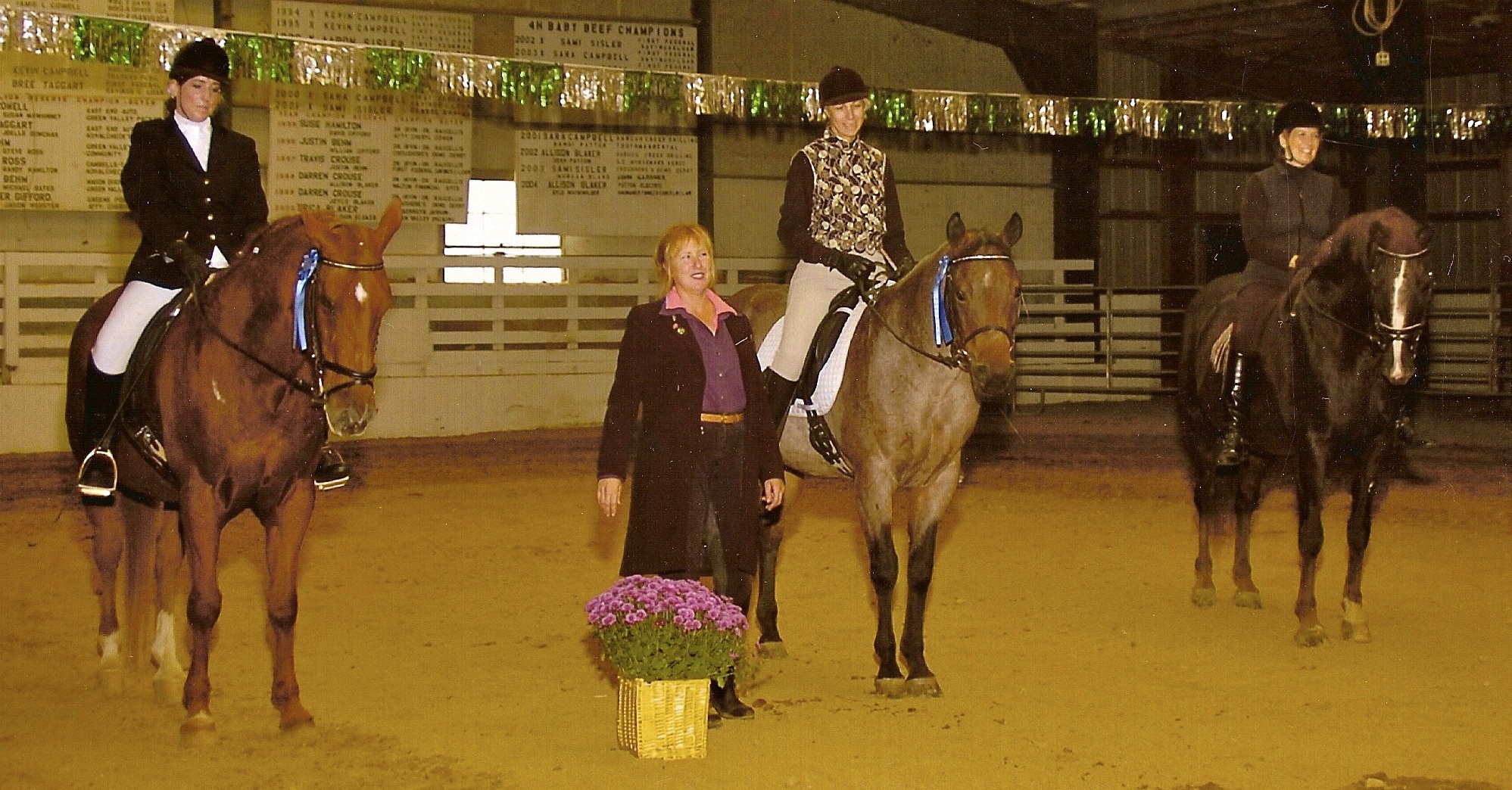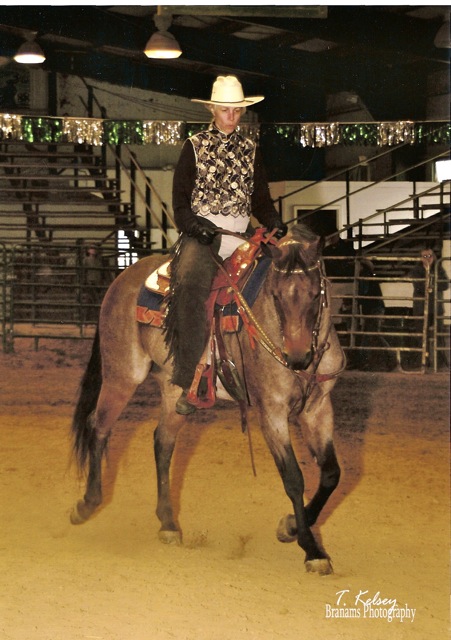|
Dressage Training Demonstration
or
Gymnastic Training for all
Horses
for the South Western Pa.
Saddle Club Charity Horse Show
benefiting The Humane Society of Greene County
Waynesburg Fairgrounds October 1, 2006.
Presenter Kristin Hermann
of
Coventry Equestrian Center

“Dressage”
is a French word that means “the training of an animal,” specifically the gymnastic training of a horse. When
Kristin Hermann, of Coventry Equestrian Center, was asked if she would give a dressage demonstration, she already knew what
approach she would use. Her opening statement to the audience of about 50 onlookers simply explained that dressage does not
mean that you ride with a top hat and tails on a 25 thousand dollar imported Warmblood or that you ride with a baseball cap
that says “Dressage Queen.” Rather, dressage training can be utilized for all kinds of riding and horses. By “doing
dressage,” a horse becomes more supple, more responsive to the rider’s aids, better able to understand the rider,
and straighter thus balanced in its performance. Ultimately, the horse then becomes happier, more respective and responsive
to the rider.

To illustrate dressage as training,
the demonstration riders showed three very different styles of riding. One rider was outfitted in traditional dressage show
attire. One rider rode bareback with no fancy saddle, and the third rider rode Western. All three riders demonstrated simple
training maneuvers in all three gaits such as riding a straight line to get the horse to move equally in both directions,
stretching to develop the horse’s top line and elasticity within the back, and lateral or side to side movements to
strengthen and supple the horse. Midway through the demonstration, the Western horse and rider changed to English tack and
riding attire and proceeded to exhibit the same maneuvers as when riding Western.
Kristin
explained how “dressage” is a systematic approach to training any horse. This approach utilizes a training scale
and various levels that a horse and rider slowly master as they progress with training. When one shows “dressage,”
that person is simply paying for the judge’s opinion on how well the rider is doing with the training of the horse.
In dressage tests, compulsory gymnastic patterns
are performed that are symmetrical in all tests whether performing at the Walk/Trot Introductory Level or at Grand Prix which
is the pinnacle of training dressage for competition.
Any good basic training system
will utilize dressage to encourage the horse to become more submissive, responsive and happy with its work. Not
all trainers may use the word “dressage” when they speak of training. Kristin believes this is from stigmas
associated with the word dressage such as the misconception that a fancy Warmblood horse and a special saddle and
top hat are required. All horses benefit from good correct training/dressage whether it is a hunter learning to
canter straight lines over fences and rating its stride, a trail horse opening a gate and moving off the rider’s leg,
or a Western horse giving at the poll to show submission and acceptance of the bit.
Overall, one
does not have to perform “Airs above the Ground” or the Haute Ecole to do dressage or the gymnastic training of
the horse. A rider simply needs to know that dressage, or training, simply means riding your horse with a foundation
of clear communication that progresses both horse and rider through a series of gymnastic patterns that develop
a unified partnership between equine and human.
|



